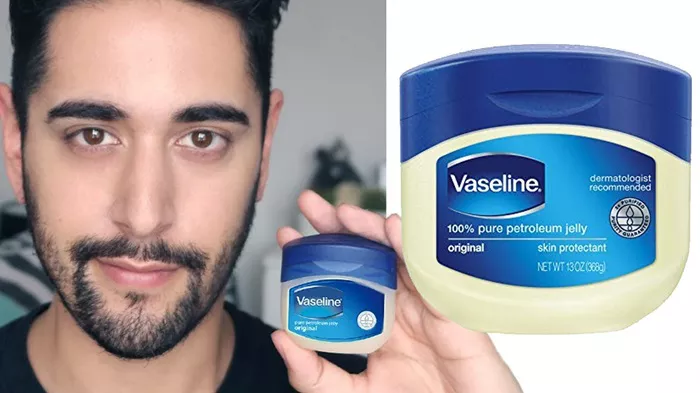Acne scars are a common issue that many individuals face after dealing with acne. These scars can vary widely in shape, size, and severity, and can often be a source of significant distress. In the search for effective and affordable treatments, one commonly discussed remedy is Vaseline, or petroleum jelly. This article explores the effectiveness of Vaseline in treating pimple scars, the science behind it, and alternative methods for managing and preventing scarring.
Understanding Acne and Its Scarring
Acne Mechanism: Acne occurs when pores of the skin become blocked by sebum, dead skin cells, and sometimes bacteria. This blockage can lead to blackheads, whiteheads, and other forms of pimples. When these pimples become inflamed or infected, they can damage the skin and underlying tissue, leading to scars once the acne heals.
Types of Acne Scars: Acne scars come in various forms:
1. Atrophic scars are depressions in the skin caused by a loss of collagen.
2. Hypertrophic scars are raised scars that occur when there is an overproduction of tissue at the site of the pimple.
3. Post-inflammatory hyperpigmentation (PIH) occurs when a healed acne lesion leaves behind a darkened patch of skin.
The Role of Vaseline in Skin Care
Composition and Properties: Vaseline, or petroleum jelly, is a blend of mineral oils and waxes, which creates a semi-solid jelly-like substance. It is highly occlusive, meaning it can create a protective barrier on the skin that locks in moisture and protects the skin from external factors.
Benefits for the Skin: The primary benefit of Vaseline in skincare is its ability to moisturize by trapping water in the skin. This helps to keep the skin hydrated and can aid in healing by preventing the skin from drying out.
Vaseline and Acne Scars
Moisture Retention: One of the critical aspects of scar healing is adequate hydration. Moisturized skin can show a reduced appearance of scars by improving skin elasticity and reducing the tightness of scarred tissue. Vaseline can prevent water loss from the skin, possibly helping the skin remain pliable and promoting a more favorable healing environment.
Barrier Protection: By forming a protective barrier over the skin, Vaseline can protect vulnerable scar tissue from environmental irritants and minor infections. This barrier can be especially beneficial during the initial healing phases of a scar.
Limitations in Treating Scars: While Vaseline can provide hydration and protection, it does not contain any active ingredients that specifically target scar tissue reduction, such as silicone or onion extract found in some specialized scar treatment products. Vaseline does not promote collagen synthesis or elasticity improvement, which are crucial in the actual remodeling phase of scar healing.
Scientific Evidence and Studies
Research Overview: The direct effects of Vaseline on acne scars have not been extensively studied. However, its role in wound care is well-documented, suggesting that it can aid in the healing process by preventing wound dehydration and reducing scarring risks in acute wounds.
Clinical Perspectives: Many dermatologists might recommend petroleum jelly as part of a post-operative care regimen to minimize scarring from surgical incisions, but its effectiveness on pre-existing acne scars remains less clear.
Alternatives to Vaseline for Acne Scar Treatment
Over-the-counter Treatments:
Silicone sheets and gels are widely used for scar treatment and are backed by research showing they can reduce scar thickness and discoloration.
Hydroquinone, kojic acid, and other bleaching agents are used for treating hyperpigmentation associated with acne scars.
Prescription Medications:
Retinoids help by increasing cell turnover and can reduce the appearance of acne scars.
Corticosteroid injections are used for raised scars to reduce inflammation and promote smoother skin.
Professional Treatments:
Laser therapy can resurface the skin and improve the appearance of scars.
Microneedling stimulates collagen production, helping to fill in atrophic scars.
Chemical peels remove the top layers of the skin, which can lessen the depth and color of scars over time.
Prevention and Maintenance
Preventing Acne Scars:
The best way to prevent acne scars is to prevent acne itself; adhering to a good skincare routine and seeking early treatment for acne outbreaks can reduce the risk of scars forming.
Avoiding the temptation to pick or squeeze pimples reduces the risk of scarring.
Daily Skin Care:
Regular use of sunscreen can prevent darkening of scars.
Keeping the skin clean and adequately moisturized can aid in overall skin health and reduce the likelihood of scarring.
Conclusion
While Vaseline is an excellent moisturizer and protective barrier, its benefits in treating pimple scars are primarily supportive. It can help maintain hydration and protect scars during healing but lacks evidence as a definitive treatment for reducing or eliminating acne scars. Those seeking to diminish acne scars should consider more specialized treatments and consult with a dermatologist to explore the most effective options based on their skin type and the severity of their scars.
In summary, while Vaseline can play a helpful role in the management of newly healing skin and minor scar prevention, it is not a cure-all for pimple scars. Effective scar management often requires a combination of preventive measures, daily skincare, and possibly professional treatments.
[inline_related_posts title=”You Might Be Interested In” title_align=”left” style=”list” number=”6″ align=”none” ids=”7962,7900,7808″ by=”categories” orderby=”rand” order=”DESC” hide_thumb=”no” thumb_right=”no” views=”no” date=”yes” grid_columns=”2″ post_type=”” tax=””]

































